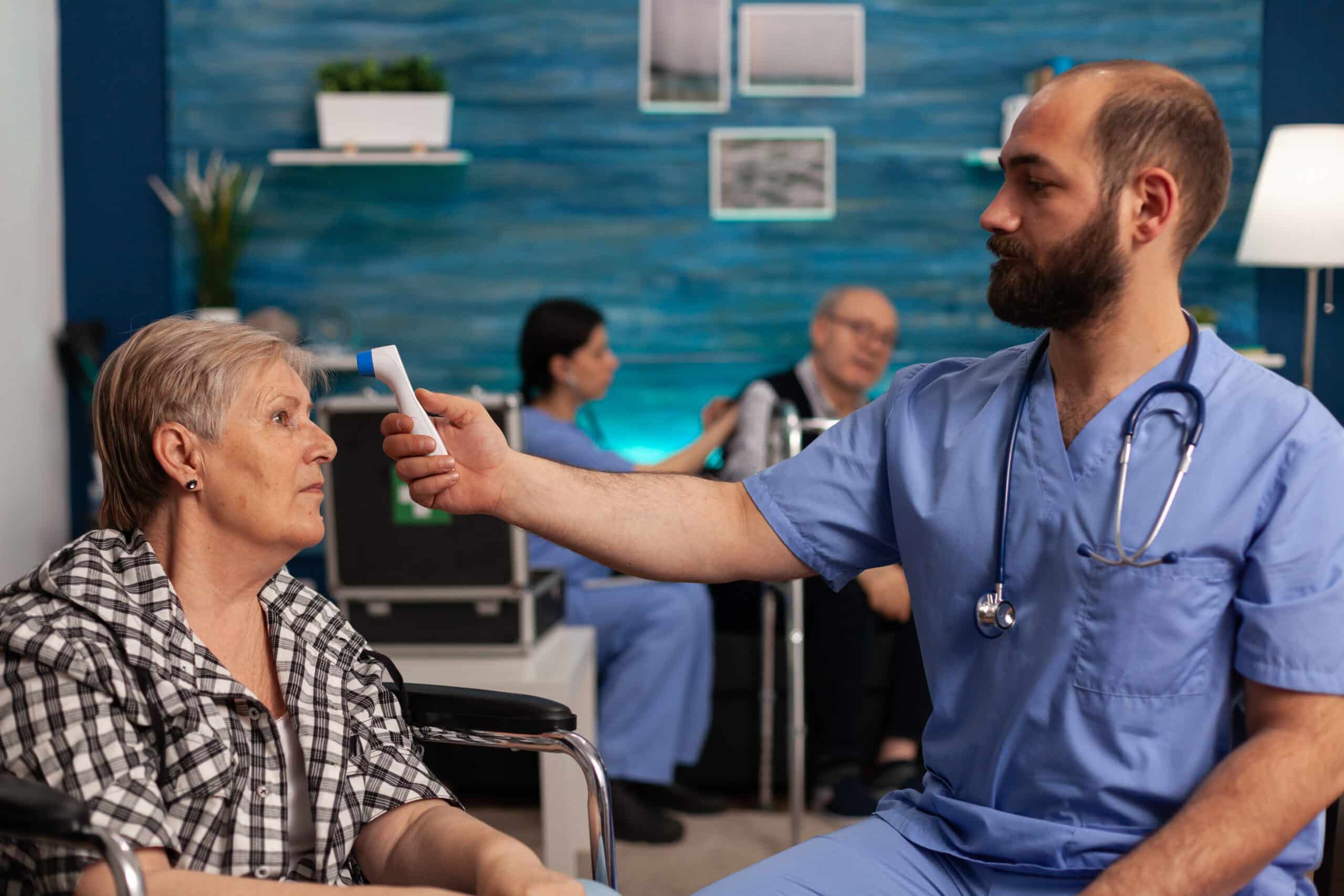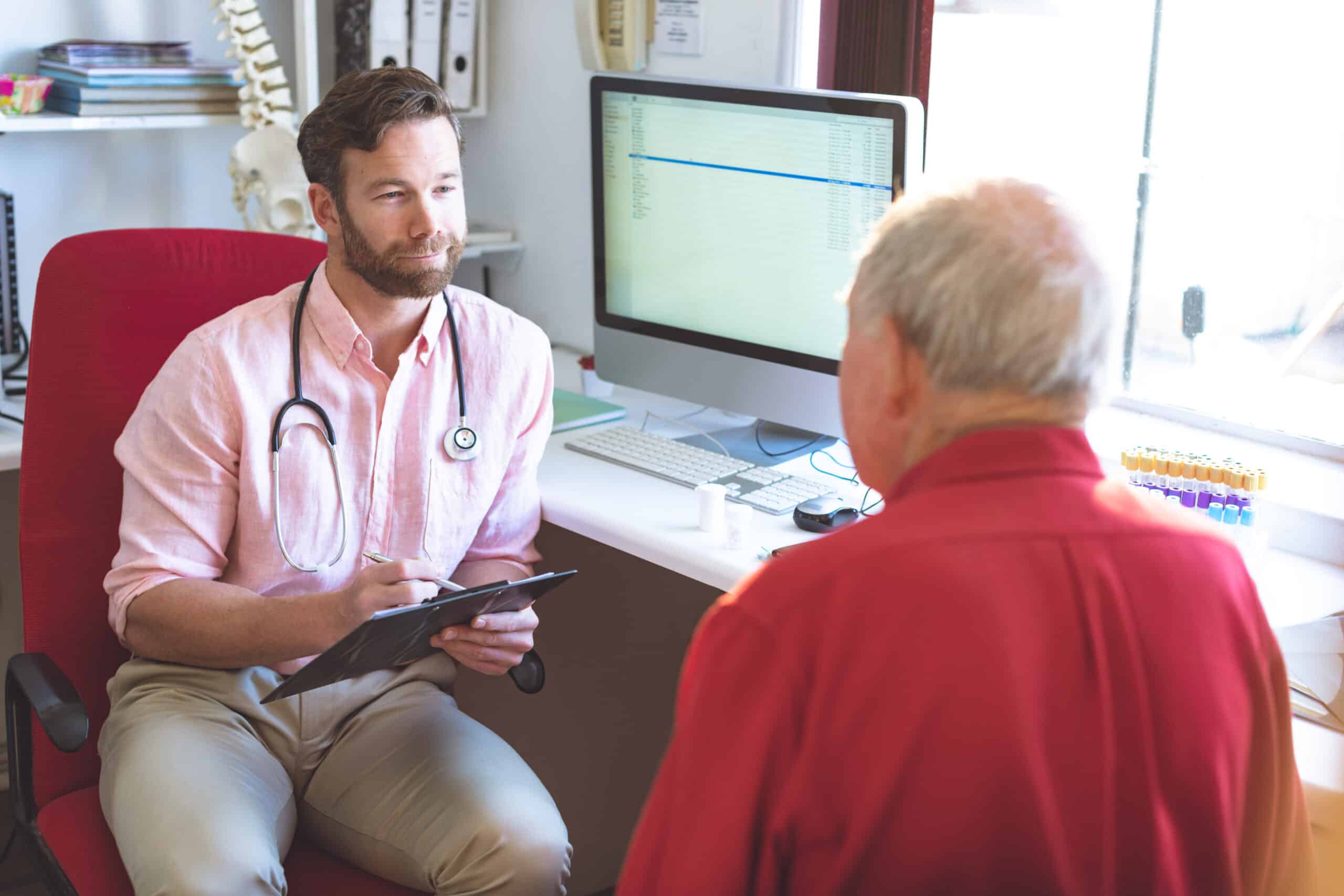The benefits of remote patient monitoring (RPM) are revolutionizing healthcare by providing continuous and real-time insights. With innovative technologies, RPM is improving patient outcomes and reducing healthcare costs.
RPM is a game-changer for both providers and patients in the healthcare industry. Consider the following statistics.
- According to the National Institute of Health, RPM reduces hospital readmissions by 25%. This improves the overall patient care.
- As per MedCity News, implementing RPM can cut healthcare costs by up to 30%.
It also minimizes emergency visits and helps detect early signs of complications before they escalate. With patients more engaged, providers can act faster and make informed decisions backed by real-time data.
As these benefits highlight, RPM is rapidly reshaping healthcare.
In this blog, we’ll explore how Murphi.ai leverages the benefits of remote patient monitoring to enhance outcomes, engagement, and overall care.
What is Remote Patient Monitoring (RPM)?
Remote Patient Monitoring (RPM) allows doctors to track patient health data outside clinical settings.
While it uses digital technology, RPM also strengthens patient-provider relationships in real time. In fact, healthcare professionals receive actionable insights without waiting for in-person visits.
Moreover, it supports early interventions before health conditions escalate into emergencies.
- Firstly, patients use wearable devices to send vital signs directly to their care team.
- Subsequently, doctors receive alerts if health metrics fall outside safe or expected ranges.
- Not only that, but RPM bridges gaps between scheduled appointments with constant virtual oversight.
As a result, the benefits of remote patient monitoring include proactive care, faster decision-making, and fewer hospital visits.
In turn, patients feel supported, while providers reduce delays in medical response time.
As healthcare continues to evolve, the importance of RPM in modern healthcare cannot be overstated. Now, let us understand why RPM is important in modern healthcare.

Importance of RPM in Modern Healthcare
Remote Patient Monitoring (RPM) has become vital in modern healthcare, as it allows continuous monitoring of patients outside traditional clinical settings.
The benefits of remote patient monitoring are transformative. As a result, they drive improved outcomes and efficiency. Below, we understand why RPM is important.
1. Early Detection of Health Issues:
RPM plays a crucial role in detecting health issues early by continuously monitoring vital signs. With real-time data, healthcare providers can identify abnormalities and take prompt action. Hence, they can prevent potential health risks before they escalate into emergencies.
2. Reducing Hospital Readmissions:
By providing continuous monitoring, RPM helps reduce hospital readmissions. Subsequently, patients can be monitored remotely. Thus, this ensures that they receive timely care and follow-up.
Ultimately, this leads to fewer unnecessary visits. Furthermore, it saves healthcare costs while ensuring effective management of conditions.
3. Improved Patient Engagement:
Remote patient monitoring enhances patient engagement by facilitating ongoing communication between patients and healthcare providers. Patients stay informed about their health status and receive timely reminders. As a result, they feel more involved in their treatment plans.
Ultimately, this improves adherence and outcomes.
4. Informed Decision-Making Through Real-Time Data:
RPM provides healthcare providers with real-time data. Therefore, it enables them to make informed decisions quickly.
With constant access to patient information, doctors can adapt treatment plans as needed. As a result, this improves care efficiency and reduces the need for frequent in-person visits.
Ultimately, the benefits of remote patient monitoring play a key role in revolutionizing healthcare. They offer continuous and real-time insights. Hence, leading to better outcomes, patient engagement, and reduced healthcare costs.
With RPM proving its value across healthcare systems, it’s time to explore how Murphi.ai elevates its impact.
Introduction to Murphi.ai
Murphi.ai is a healthcare automation platform designed to transform healthcare services like clinician workflow, patient care, and case management.
By combining intelligent automation and AI-powered insights, Murphi.ai strengthens care delivery. Not only that, it helps healthcare providers streamline operations and decision-making across various touchpoints.
- To start with, Murphi.ai uses AI automations to enhance clinician workflow and reduce manual administrative work drastically.
- Furthermore, it supports case management by generating structured call notes, summaries, and smart documentation tools.
- The platform amplifies the benefits of remote patient monitoring through real-time data, alerts, and personalized care.
Murphi.ai empowers healthcare providers to unlock the full benefits of remote patient monitoring. Automating critical processes improves care quality and reduces clinician workload. Ultimately, driving smarter and faster patient outcomes.
With Murphi.ai at the core, the benefits of remote patient monitoring become more impactful and measurable. Now, Let us explore some of the key benefits.

Key Benefits of RPM with Murphi.ai
The benefits of remote patient monitoring (RPM) provide immense value to healthcare providers and patients. By enabling continuous monitoring and communication, RPM significantly enhances the quality of care.
In this section, we will explore the key benefits of remote patient monitoring with Murphi.ai.
1. Enhanced Patient Engagement
Murphi.ai boosts engagement through continuous monitoring. Thus, it showcases the benefits of remote patient monitoring by keeping patients involved in care.
Consequently, it improves collaboration with healthcare providers.
- Real-Time Monitoring:
Murphi.ai enables continuous monitoring of patient vitals. Therefore, it ensures timely interventions and the development of personalized care plans tailored to each patient’s needs.
This results in improved overall care outcomes.
- Automated Communication:
The platform automates appointment reminders, follow-up communications, and health updates. As a result, it keeps the patients informed and engaged with their treatment plans.
Ultimately, this fosters stronger patient-provider relationships and promotes better healthcare compliance.
2. Improved Clinical Outcomes
Murphi.ai improves clinical outcomes by using continuous monitoring to identify potential health issues early. Therefore, it ensures that patients receive prompt medical attention and timely interventions for better overall health.
- Early Detection of Health Issues:
Continuous monitoring through Murphi.ai supports early detection of potential health issues. Thus, they help in facilitating quick medical attention and better outcomes.
Furthermore, optimizing the benefits of remote patient monitoring for long-term health.
- Personalized Care Plans:
Murphi.ai’s AI capabilities assist healthcare providers in creating personalized care plans based on detailed patient data. Additionally, they help in optimizing treatment strategies and ensuring that every patient receives the most effective care possible.
3. Operational Efficiency for Healthcare Providers
Automating tasks such as documentation and EHR integration greatly boosts operational efficiency.
Murphi.ai streamlines clinician workflows while amplifying the benefits of remote patient monitoring across healthcare environments.
- Automated Documentation:
Murphi.ai automatically generates call notes and patient summaries. Furthermore, streamlining documentation and reducing administrative tasks. This enhances the benefits of remote patient monitoring by allowing providers to focus on patient care.
- EHR Integration:
Seamless integration with Electronic Health Records systems enables constant access to precise patient data. It minimizes manual entry, supports clinician productivity, and improves overall efficiency in healthcare delivery workflows.
4. Cost Reduction
Cost reduction is a significant benefit of remote patient monitoring with Murphi.ai.
By reducing hospital readmissions and unnecessary in-person visits, Murphi.ai helps lower healthcare costs.
- Decreased Hospital Readmissions:
Through continuous remote monitoring, Murphi.ai helps healthcare teams identify health issues early and intervene quickly. Subsequently, it reduces hospital visits and prevents avoidable readmissions. Ultimately, supporting better long-term outcomes for chronically ill and recovering patients.
- Reduced Administrative Costs:
Automating administrative processes cuts labor expenses for healthcare providers. Additionally, fewer manual tasks reduce staffing needs and errors. These changes highlight the long-term benefits of remote patient monitoring in driving sustainable financial efficiency.
5. Enhanced Data Security and Compliance
Murphi.ai ensures that patient data is secure and compliant with industry standards by offering robust protections. Not only that, it adheres to HIPAA regulations and guarantees the privacy and confidentiality of sensitive information.
- HIPAA Compliance:
By complying with HIPAA standards, Murphi.ai ensures that all patient data remains protected throughout its lifecycle. Thus, it maintains privacy and meets legal requirements for healthcare information security.
- ISO27001 & SOC 2 Certification:
Murphi.ai’s ISO27001 and SOC 2 certifications reflect its commitment to safeguarding patient data. These certifications confirm that the platform adheres to the highest security and compliance standards.
6. Real-World Applications
Murphi.ai is revolutionizing healthcare with its practical solutions for chronic care management and oncology care.
Through leveraging continuous monitoring and advanced data analysis it helps healthcare providers deliver more personalized care. Ultimately, it helps to improve patient outcomes in real-world applications of remote patient monitoring.
- Chronic Care Management:
Murphi.ai enhances chronic care management by providing the benefits of remote patient monitoring. Continuous tracking of patient vitals helps identify early changes in health conditions.
As a result, this leads to quicker interventions and improved management of chronic diseases. Further, this results in fewer hospital admissions and optimizing patient outcomes.
- Oncology Care:
In oncology care, Murphi.ai offers the benefits of remote patient monitoring by continuously monitoring patients’ health after treatment.
This real-time data allows healthcare providers to detect issues early. Thus, it ensures timely interventions and improved patient recovery during cancer treatment.

Conclusion
In conclusion, the benefits of remote patient monitoring (RPM) are undeniable. By embracing RPM, healthcare providers can deliver more personalized care.
Further, they can improve both outcomes and patient satisfaction. Subsequently, it leads to significant cost savings and makes it an essential tool for the modern healthcare system.
As we’ve seen, RPM’s impact is wide-reaching, from reducing hospital readmissions to increasing patient engagement. The benefits of remote patient monitoring are set to reshape healthcare for the better.
To explore how Murphi.ai can help you harness RPM’s power, get in touch with us today!
FAQs
1. What Are the Main Benefits of Remote Patient Monitoring?
The key benefits of remote patient monitoring include improved outcomes, fewer hospital visits, and enhanced patient engagement.
2. How Does Remote Patient Monitoring Help Doctors and Patients?
It allows doctors to track health remotely while patients receive care from home. Therefore, it increases convenience and safety.
3. Can the Benefits of Remote Patient Monitoring Support Chronic Illness Care?
Yes, the benefits of remote patient monitoring are especially valuable in managing chronic conditions like diabetes or heart disease.
4. How Does Murphi.ai Maximize the Benefits of Remote Patient Monitoring?
Murphi.ai uses AI to personalize data insights, reduce manual work, and deliver faster, smarter healthcare responses to maximize the benefits of remote patient monitoring.
5. Is Remote Patient Monitoring Cost-Effective for Healthcare Systems?
Absolutely. It reduces readmissions, lowers operational costs, and improves care delivery across the board.
 Watch 2 min video
Watch 2 min video 
Leave feedback about this